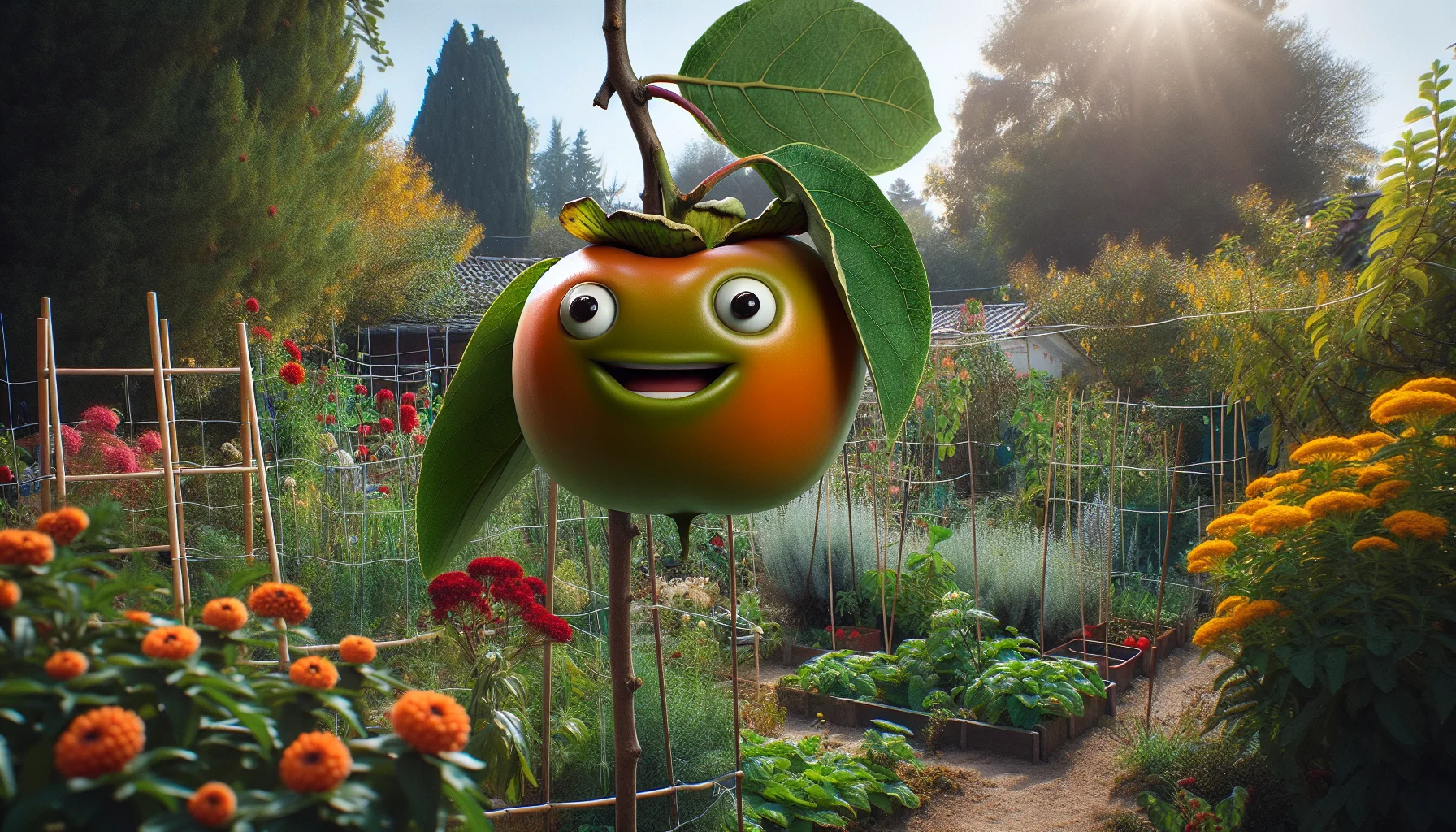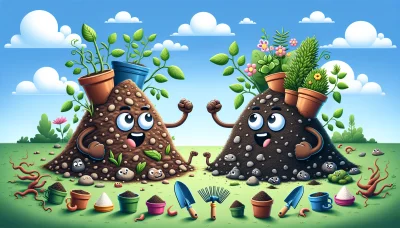Unripe persimmon Quiz
Test Your Knowledge
Question of
Understanding Unripe Persimmons
Unripe persimmons are the early stage fruits of the persimmon tree, which is known for its sweet, honey-like flavor when fully mature. These immature fruits are typically hard, with a bright green to yellow-orange color, depending on the variety and how close they are to ripening. Unlike their ripe counterparts, unripe persimmons contain high levels of tannins, which give them a distinctly astringent and bitter taste. This astringency is so strong that it can cause a puckering sensation in the mouth. Gardeners might find unripe persimmons in their gardens for a few reasons. Firstly, the timing of harvest can be tricky to get right, and secondly, some varieties of persimmon, such as the American persimmon (Diospyros virginiana), naturally drop their fruit before it is fully ripe. Growing persimmons can be a rewarding challenge, offering both aesthetic beauty with their bright fruit and foliage, and the eventual reward of delicious, ripe fruit if timed correctly.
The Growth Cycle of Persimmons
The growth cycle of persimmons begins in spring with the flowering stage, where small, bell-shaped flowers bloom on the trees. These flowers are either male or female, with only the female flowers maturing into fruit. Following pollination, the fruit starts to form, marking the beginning of the growth phase. This phase is characterized by the small, green fruits that gradually grow in size over the summer months. As we progress into the unripe phase, the persimmons are still hard and astringent due to the high levels of tannins, making them inedible at this stage. It is crucial for the fruit to remain on the tree during this period, as the tannins gradually break down and the fruit starts to soften. Finally, as autumn approaches, the persimmons reach the ripening phase. The color of the fruit changes from green to a vibrant orange or red, signaling that they are ready to be harvested. The ripened persimmons are now sweet and soft, perfect for consumption.
Health Benefits and Risks of Unripe Persimmons
Nutritional Benefits
- High in fiber, which aids in digestion and helps prevent constipation.
- Rich in antioxidants, such as vitamin A and vitamin C, which help protect the body from free radicals.
- Contains important minerals like manganese, iron, and calcium.
- Low in calories, making it a healthy addition to weight loss diets.
- Provides a good source of energy due to its high carbohydrate content.
Potential Health Risks
- May cause digestive issues such as diarrhea and bloating in some individuals due to its high tannin content when unripe.
- Consuming large amounts of unripe persimmons can lead to the formation of bezoars (hardened digestive masses) in the stomach, which may require medical attention.
- The high fiber content, while beneficial, can also cause gastrointestinal discomfort if consumed in excess.
- People with allergies to latex may also react to unripe persimmons due to the presence of certain compounds that can trigger allergic reactions.
How to Ripen Persimmons
Persimmons are unique fruits that require proper ripening to fully enjoy their sweet, honey-like flavor. There are several natural methods to ripen persimmons at home. The simplest way is to leave them at room temperature, away from direct sunlight, which allows them to ripen gradually. For a faster ripening process, place the persimmons in a paper bag with an apple or a banana. The ethylene gas produced by these fruits accelerates the ripening. Checking the persimmons daily is crucial as they can go from unripe to perfectly ripe quite quickly. Another method is to bury the persimmons in dry, uncooked rice, which also speeds up the ripening process without the need for other fruits. Whichever method you choose, be patient and gentle with the fruit to prevent bruising, and enjoy the sweet reward of perfectly ripened persimmons.
Gardening Tips for Growing Persimmon Trees
- Choose a sunny spot with well-draining soil to plant your persimmon tree.
- Water young trees regularly to establish a strong root system, but avoid over-watering as persimmons do not like soggy feet.
- Apply a balanced fertilizer in late winter or early spring before new growth begins.
- Mulch around the base of the tree to retain moisture, regulate soil temperature, and reduce weed competition.
- Prune persimmon trees in winter to remove any dead or diseased wood and to shape the tree.
- Thin the fruit in early summer if your tree is heavily laden, to prevent branches from breaking and to promote larger fruits.
- Protect the tree from birds and pests as the fruit begins to ripen.
- Harvest persimmons once they are fully colored but still firm, or let them ripen on the tree if you can protect them from birds.
Common Problems and Solutions for Growing Persimmons
| Problem | Solution/Preventative Measure |
|---|---|
| Persimmon Psyllid | Apply insecticidal soap or neem oil to combat infestations. |
| Fruit Drop | Ensure consistent watering, especially during dry periods, and provide adequate nutrition. |
| Anthracnose | Prune affected areas and apply fungicide to prevent spread. |
| Leaf Spot | Remove infected leaves and avoid overhead watering to reduce moisture on foliage. |
| Root Rot | Ensure good drainage and avoid overwatering. Consider soil amendments to improve drainage. |
| Verticillium Wilt | Remove affected trees to prevent spread. Choose resistant varieties when planting new trees. |
Innovative Recipes Using Unripe Persimmons
Unripe persimmons, often overlooked in the culinary world, offer a unique tartness and texture that can transform your cooking. From savory dishes to delightful desserts, these green gems can be the star of your kitchen. Imagine incorporating them into a tangy salsa for a fresh twist on your favorite tacos, or perhaps, exploring their potential in a crisp, refreshing salad, adding both crunch and a punch of flavor. For the adventurous palate, consider a persimmon chutney that pairs perfectly with cheeses and meats, elevating your charcuterie board. Let's embrace the versatility of unripe persimmons and explore the endless possibilities they bring to our tables.












